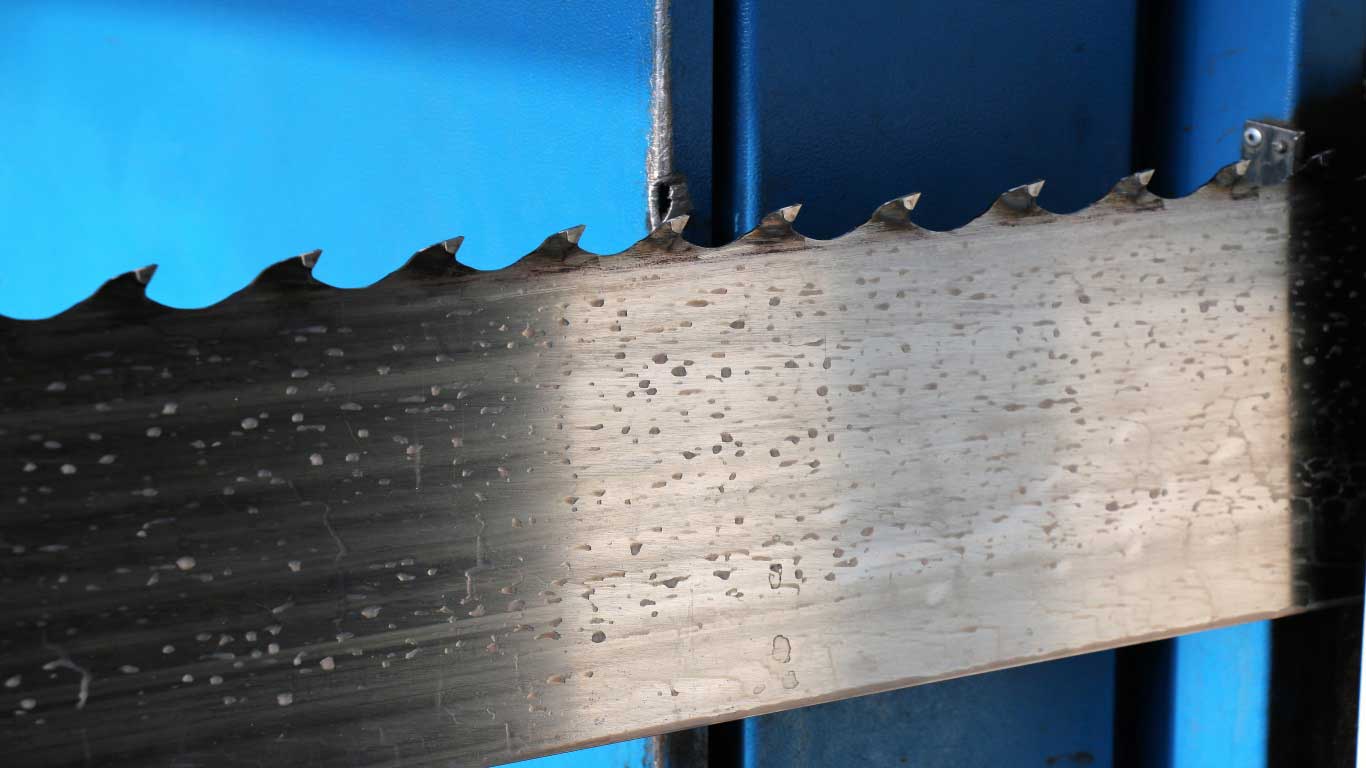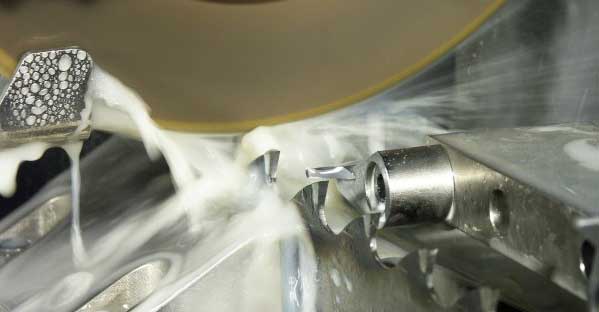
The sharpening
The cutting edge of the teeth can be lost after a long use, especially if the bandsaw blade is not adequate to the type of wood being cut, or if dealing with a frozen log, un-debarked log or one with inclusions . For an easy cut, it is recommended that the logs are de-barked.
Sharpening is the operation that consists of grinding the cutting edge of the teeth, which is the fundamental element of the bandsaw blade in the process of wood cutting. Based on our experience, incorrect sharpening is the cause of the most cracking issues. Due to this, a lot of attention needs to be paid toward this aspect, as it can cause negative economic effects, through the destruction of the bandsaw blades. For example, an incorrect tensioning can be remediated in most cases and only has effects like the blade functioning faultily. On the other hand, an incorrect sharpening (too intense, which leads to burning) can produce transformations in the body of the blade, which, while functioning, favors the appearance of cracks.
This operation can be done with automatic machines or CNC, with or without coolant. The sharpening can be done on mechanical machines without cooling fluid, but for obtaining a high productivity rate,sharpening machines with coolant or CNC (Computer Numerical Control) machines or can be used to obtain special tooth shapes. An example of such machines can be seen by accessing this link .
The advantages of such a machine are:
- Increased flexibility - reduced amount of time necessary for changing the tooth shape
- Productivity - the possibility of using more intense grinding cycles without the danger of burning the gullet area.
- Versatility - through the variety of tooth shapes that can be realised.
More information about machines dedicated to sharpening can be found here .
Another important element is the abrasive wheel that we use. Choosing the grinding wheel is done depending on the material that needs to be sharpened and the characteristics of the sharpening machine that we use.
For sharpening set-tooth band saw blades on machines without cooling fluid, the recommended abrasive discs are with a ceramic binder.
For sharpening stellite-tipped band saw blades the use of discs with a bakelitic binder is recommended.
In both cases, for a more precise and smooth sharpening, the CBN (with borazone) discs are recommended, which are more durable and don’t need profile correction. Special attention has to be paid when choosing the grinding stone, from the point of view of its grit and hardness. The grit determines the surface quality of the sharpening and the hardness is chosen based on the hardness of the processed material. Practically, for the conventional sharpenings, we recommend the use of ceramic stones, having a grit of 60, and K hardness.
When using sharpening machines with cooling fluid, you have to take into consideration the following three factors:
- Clean fluid, without impurities
- System that ensures a sufficient fluid debit (for the necessary cooling)
- The liquid should not be oxidized
 When is a resharpening necessary? When the bandsaw deviates or when we observe that it opposes too great a resistance while cutting.
When is a resharpening necessary? When the bandsaw deviates or when we observe that it opposes too great a resistance while cutting.
How many times can we sharpen a bandsaw? For the stellited bandsaws, it can be done 5-8 times, until the full use of the stellite. This aspect depends on the wear of the cutting edges and the sharpening method used (the precision of the cutting machine). The CNC machines give the possibility of an extremely precise sharpening of the teeth of the bandsaw.
When should I invest in a sharpening machine? The opportunity of purchasing a sharpening machine appears when we have a quantity of bandsaw blades that is large enough to cover the machine’s possibilities of manufacturing.
What sharpening machine should I choose? For the set and swage tooth bandsaws, the mechanical machines without coolant can be used, and for the stellite-tipped ones, the use of CNC machines with cooling liquid is recommended.
In the following article we will discuss more in depth about the sharpening parameters and the methods of increasing the cutting efficiency of the logs.
Contact
Adress: 440122, Satu Mare, Aurel Vlaicu 102-106, Romania
Phone: +40-261-711511
Email: metamob@metamob.ro


